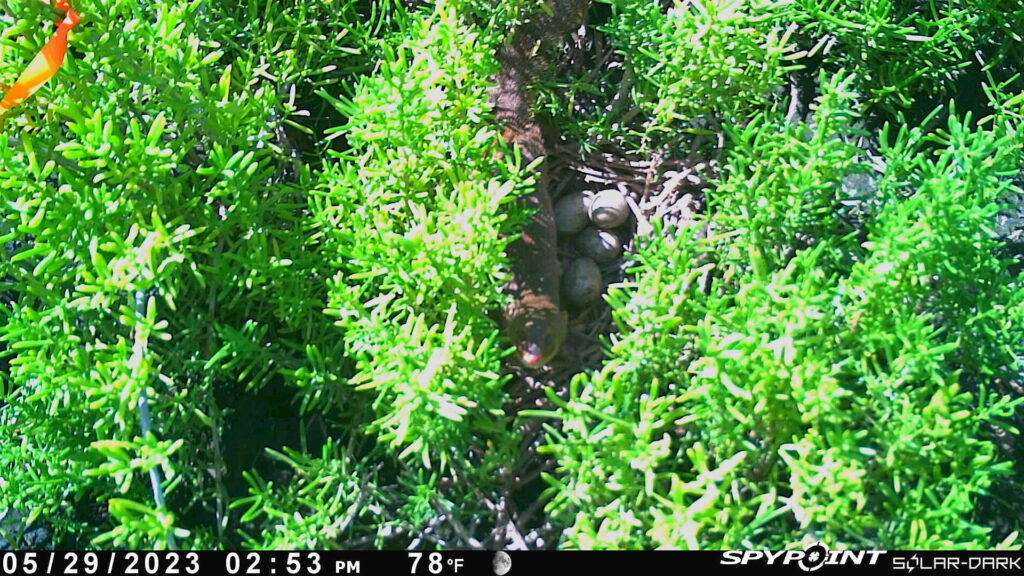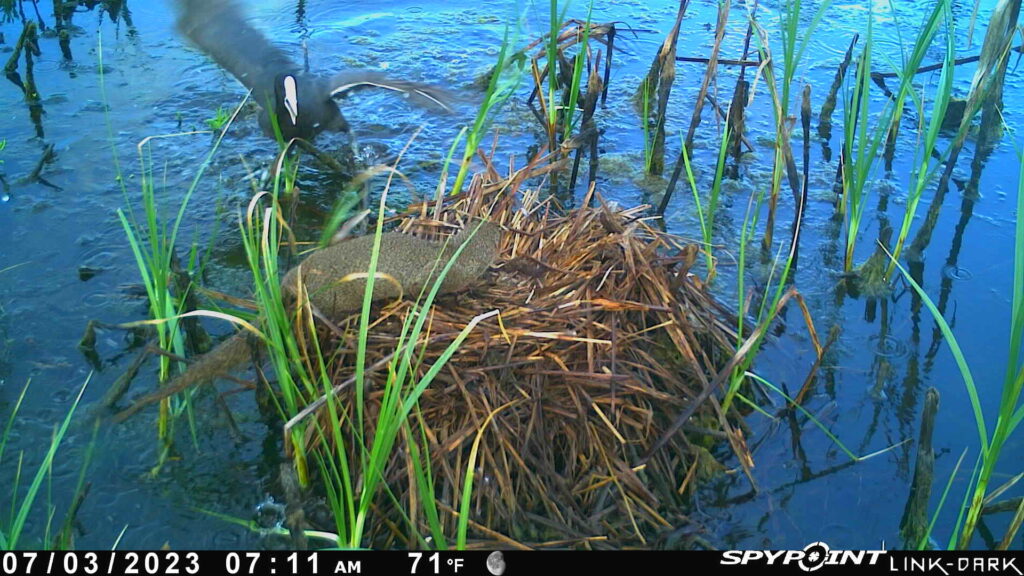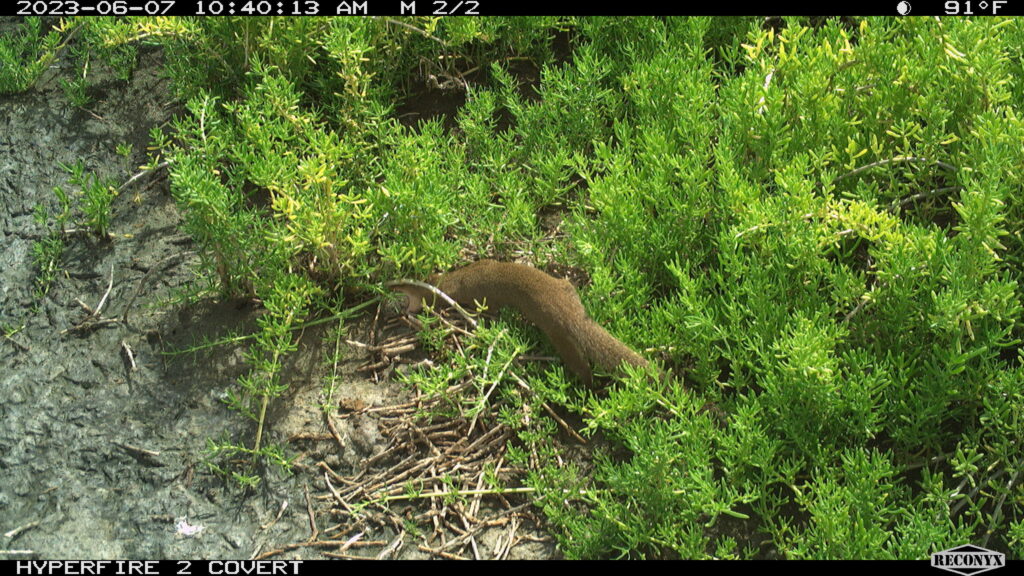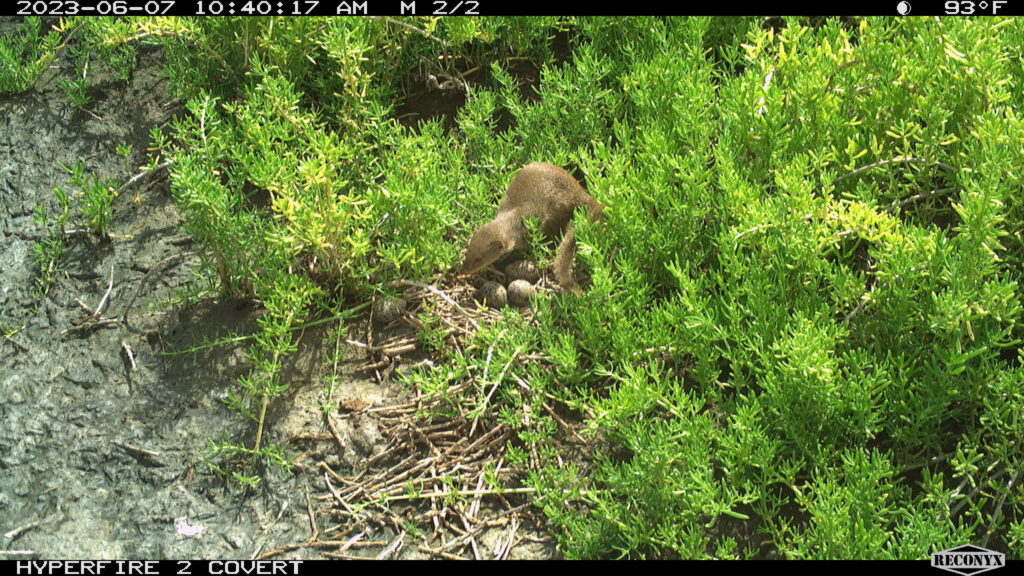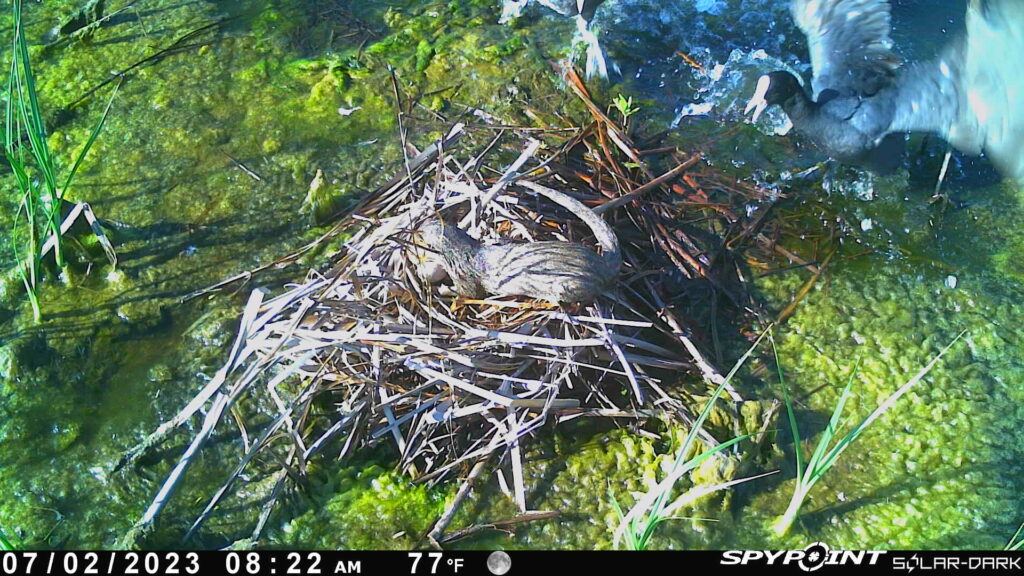Hawaiʻi is home to many endemic bird species. Yet, most picture the rainforest with the colorful assemblage of honeycreepers, not realizing that waterbirds, too, have a unique place in the Hawaiian Islands. The endemic Hawaiian waterbirds include rails, ducks, geese, herons, ibises, and stilts. Unfortunately, many species went extinct after the arrival of humans, but a few remain, and they are sustained by conservation efforts that maintain their precarious populations. On the island of Oʻahu, we have been working on understanding the threats predators have on the nesting successes of three endemic Hawaiian waterbirds: ʻalae keʻokeʻo (Hawaiian Coot Fulica alai), ʻalae ʻula (Hawaiian Common Gallinule Gallinula galeata sandvicensis), and aeʻo (Hawaiian Stilt Himantopus mexicanus knudseni). Since Hawaiian waterbirds are reliant on intensive management for their survival, managers of these waterbirds need to identify the predators responsible for nest depredations and the frequency of those events.
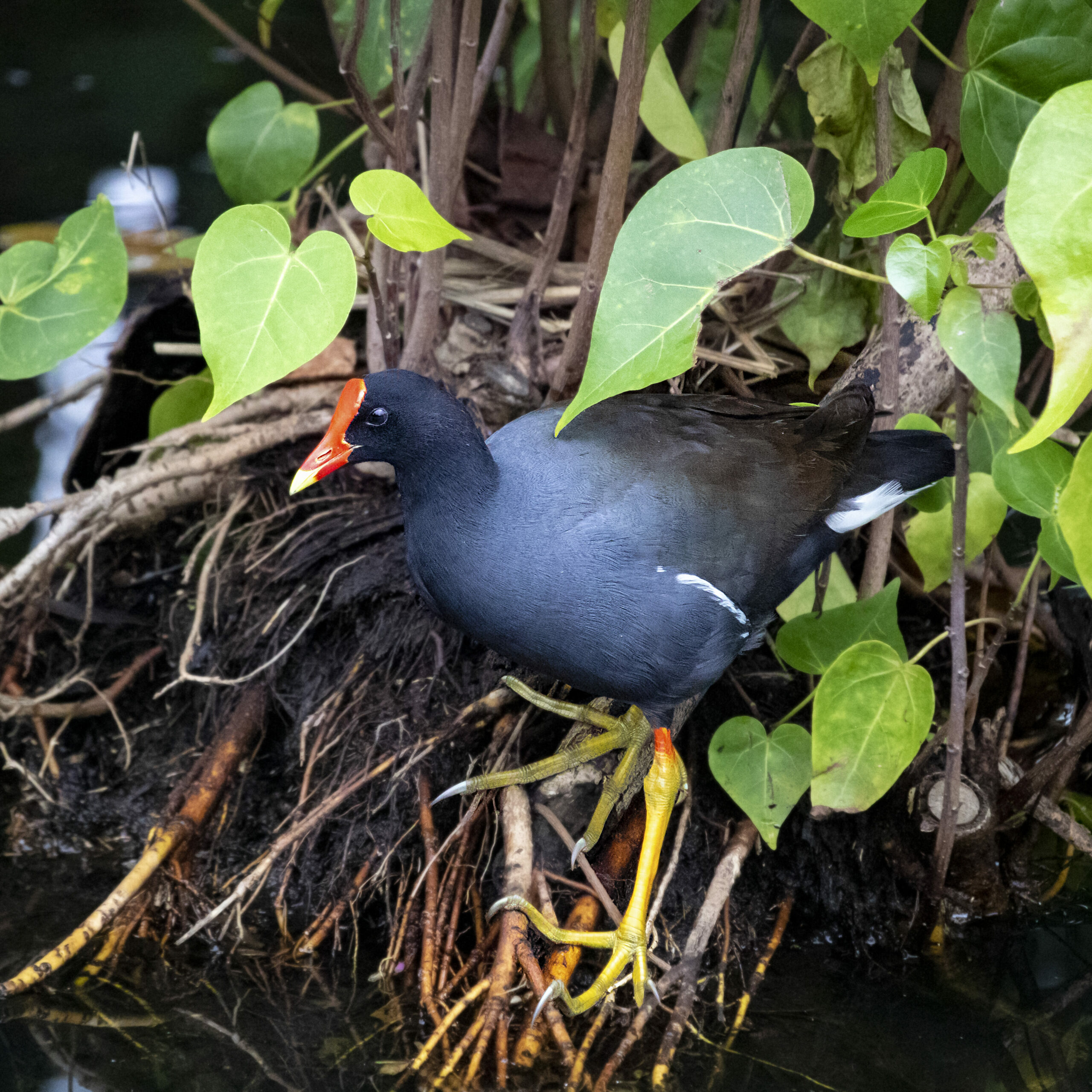
Identifying which predator was most problematic proved straightforward as we found that the invasive small Indian mongoose (Urva auropunctata) was the main contributor to nest predation and responsible for 76% of nest predations. All other nest depredations were attributed to other endangered Hawaiian waterbirds, like an ʻalae keʻokeʻo destroying an aeʻo nest. But how susceptible was each Hawaiian waterbird to the small Indian mongoose? Our recently published paper in the Journal of Field Ornithology aimed to analyze the daily survival rates (DSR) of nests of ʻalae keʻokeʻo, ʻalae ʻula, and aeʻo. Understanding the DSRs of nests is important for managers since there are apparent differences in each waterbird species’ interaction with their habitat, and catering to each of the Hawaiian waterbird species is essential to provide specific habitat requirements for them to thrive.
We found that nest success at two wetland sites was significantly different for ʻalae ʻula (0.50 and 0.22) and similar for ʻalae keʻokeʻo (0.50 and 0.35) and aeʻo (0.47 and 0.43). However, Kawainui Marsh had lower nest success estimates for all Hawaiian waterbirds than Hāmākua Marsh, which is likely attributed to lower predation rates at Hamakua Marsh for ʻalae ʻula and ʻalae keʻokeʻo nests. The aeʻo nests were predated similarly, and the nest success estimates were the most similar.
The site managers believe the higher small Indian mongoose predation rates on ʻalae ʻula and ʻalae keʻokeʻo at Kawainui Marsh are likely attributed to different habitat conditions since Hāmākua Marsh offers less concealing vegetation and tends to maintain more consistent water depth. The small Indian mongoose prefers not to enter water and move among taller vegetation. The reason aeʻo nests are predated similarly is likely due to timing since aeʻo nest during the dry season when water depths are much lower and similar between each wetland site. So, the survival of the nest stage of endemic Hawaiian waterbirds will rely on controlling for the small Indian mongoose at least for the islands in which those occur.
Aaron J. Works
Wildlife Biologist, Non-Game Management Project
Oʻahu Wildlife Resources Management Section
Department of Land and Natural Resources, Division of Forestry and Wildlife
The results of this study were recently published in the Journal of Field Ornithology:
Works, A. J., L. Nietmann, T. Shimabukuro, K. Harmon, J. A. Botet Rodriguez, and M. R. Price. 2024. Nest predation and daily survival rates of three Hawaiian endemic species. Journal of Field Ornithology 95(4):5. https://doi.org/10.5751/JFO-00575-950405.
Header photo: ʻalae keʻokeʻo (Hawaiian Coot Fulica alai) by Alex Wang

